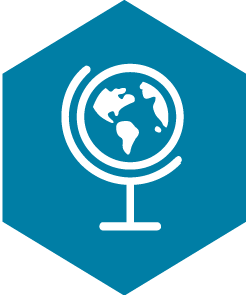A fair amount of requests we get from districts relate to planning with the TEKS Resource System documents. The Instructional Focus Document (IFD) remains the primary document in the system for unit planning and the social studies specialists at the service centers offer exceptional training/support for using the IFD. The IFD facilitates planning the unit structure, and bundles the standards for unit cohesion, but what about bundling standards for the lessons taught in the unit? That can be challenging in Social Studies, so the TEKS Resource Social Studies Team has provided an additional planning resource for this – Learning Goals.
This tool is intended to address the challenge of having a large amount of standards in most secondary social studies courses and the conceptual nature of the standards in some courses, especially World Cultures and World Geography.
Dos and Don’ts with Learning Goals
Research has shown that student learning is enhanced when students and teachers have a clear learning goal (objective). Research also indicates that there are ineffective and effective approaches to using learning goals.
- Don’t post the learning goal and assume students took notice.
- Do have students put the learning goal for the lesson into their own words. Many teachers do this by having students break the learning goal into “I can . . .” statements. Breaking down the learning goal is important in social studies as the learning goal for the lesson will most likely have several components in an effort to address all the standards included in the lesson.
- Do introduce the lesson with the learning goal. Lessons should begin with the teacher framing the lesson with what learning is expected and how that learning fits into the broader unit focus or unit understanding.
- Do refer to the learning goal throughout the lesson and return to it at the end of the lesson. Periodically reflecting on student progress toward the learning goal serves as a check for understanding.
- Don’t confuse learning goals with instructional activities. For example, “Students will create a timeline of important events of the French Revolution” is an instructional activity. On the other hand, “Describe what steps were taken by the French in an effort to change the government” is a learning goal. Students could demonstrate the learning in a variety of activities, possibly with a timeline.
- Do align instruction and assessment to the learning goal. For example, if the learning goal is “Describe the causes and effects of rural to urban migration in the United States during the early 20th century,” simply creating a map of these migrations would not be sufficiently aligned.
We hope you find this resource beneficial in your planning. More information about learning goals can be found here.
Photo by Markus Winkler on Unsplash

